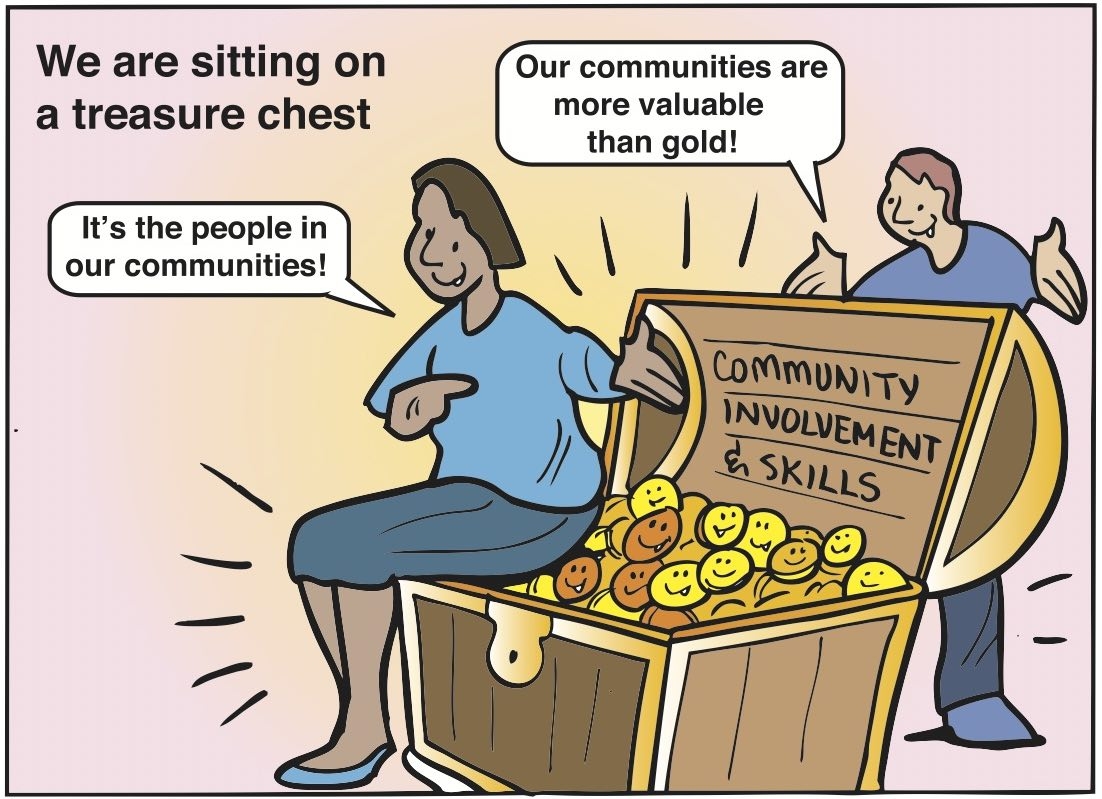The relationship between Community Organising and Asset-Based Community Building in the UK (Three part series)
What would you discover if you could make visible all the invisible assets (the local things that make our communities special and powerful: people, associations, community oriented-institutions, economy, ecology, and culture) that already exist in local towns, villages, and neighbourhoods? You would see people and community power expressed in many ways: creative groups, hardworking local institutions helping to build community, alongside amazing ecological and economic potential that currently is undervalued.
 Most of these assets go unnoticed; as a result many of our greatest capacities never get connected up or mobilised into action to create a better future with local residents in the driving seat. That’s where Community Builders and Community Organisers come in, their role is to support local communities to come together to create and live the life they choose, by using their assets. Does this sound a bit too ‘glass-half full’?
Most of these assets go unnoticed; as a result many of our greatest capacities never get connected up or mobilised into action to create a better future with local residents in the driving seat. That’s where Community Builders and Community Organisers come in, their role is to support local communities to come together to create and live the life they choose, by using their assets. Does this sound a bit too ‘glass-half full’?

This illustration was part of Graham Ogilvie’s artwork created during Cormac’s session in Aberdeen in October 2014. Our thanks to him and Aberdeen Council for sharing them with us. Read more about this session by clicking on the image or going here: http://bit.ly/1GFVHT2
Yes, of course the glass is also half empty. The Department for Communities and Local Government highlighted this in their recent report on the most deprived neighbourhoods in England. People experience real struggles and injustices, especially in low-income communities, where they often face crushing poverty and inequality. Mindful of this, many reports concentrate exclusive on what is wrong, and communities become defined by the sum of their problems.
However, the glass is also half full. Citizens and community workers also see this version of reality on a daily basis, and they know:
- You can’t help a community become stronger by simply focusing on what is missing or wrong. People need to use what they have to secure what they need.
- Communities don’t know what they need, until they know what they have.
So in fact, the glass is both half full and half empty at the same time, but, if you want to build a community that flourishes, do you start with what is missing or with that which is already there? We believe in starting with what communities have and then building on that in order to grow the power that is needed to secure external resources.
This series of blogs aims to tell the story of that very local journey. We will share stories from local communities across England and Wales, and reflect on the many possibilities that lie out ahead. We do so because we believe we need to start a new national conversation, about the places where we live, and not just the conditions that we sometimes live with. We need to have a truly political conversation, not a medical one. A conversation that starts with a focus on what matters to local people, not with what is the matter with them, one that is about social justice, where people who have been defined as the problem secure the power to redefine the problem with their neighbours.
